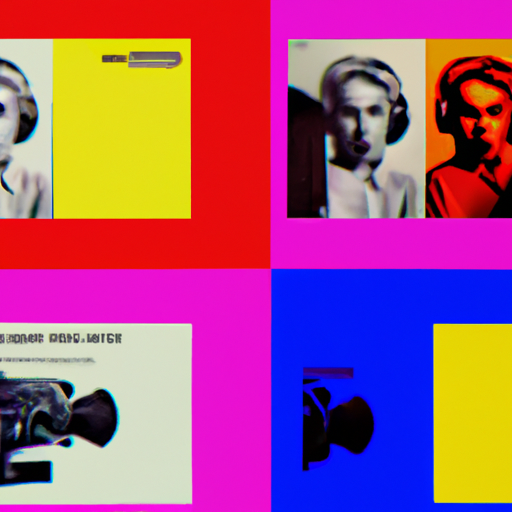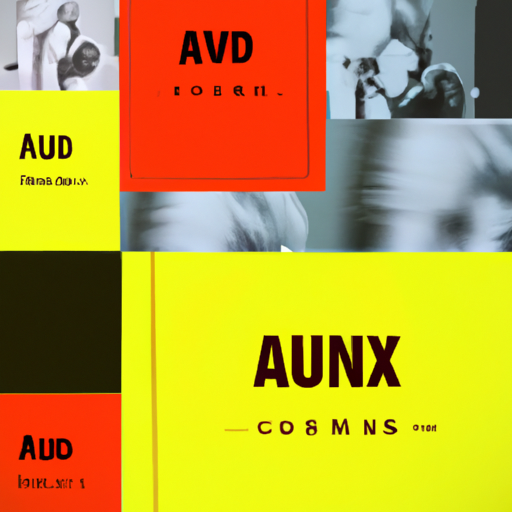
-
Table of Contents
- Package Design for Music Albums: Capturing the Sound
- The Power of Visuals in Music
- The Evolution of Album Art
- The Role of Package Design in the Music Industry
- Effective Communication through Package Design
- Case Studies: Memorable Album Covers
- 1. “Abbey Road” by The Beatles
- 2. “Nevermind” by Nirvana
- 3. “The Rise and Fall of Ziggy Stardust and the Spiders from Mars” by David Bowie
- The Future of Package Design for Music Albums
- Key Takeaways
Package Design for Music Albums: Capturing the Sound

When it comes to music, the experience is not limited to just the auditory sense. Visual elements play a crucial role in enhancing the overall impact of an album. Package design for music albums is an art form in itself, as it aims to capture the essence of the sound and create a visual representation that resonates with the audience. In this article, we will explore the importance of package design for music albums, its impact on the music industry, and how it can effectively communicate the artist’s vision.
The Power of Visuals in Music
Music has the ability to evoke emotions, create memories, and transport listeners to different worlds. However, the impact of music can be further enhanced when combined with compelling visuals. Package design for music albums serves as a visual gateway to the music, providing listeners with a glimpse into the artist’s world and setting the tone for the overall experience.
Visual elements such as album covers, liner notes, and packaging materials contribute to the storytelling aspect of music. They can convey the genre, mood, and themes of the album, creating intrigue and curiosity among potential listeners. A well-designed album package can even become a collector’s item, adding value to the music and creating a deeper connection between the artist and the audience.
The Evolution of Album Art
Album art has come a long way since its inception. In the early days of vinyl records, album covers were often simple and straightforward, featuring the artist’s name and the album title. However, as the music industry evolved, so did the album art. Artists and designers began to experiment with different styles, incorporating illustrations, photography, and graphic design to create visually stunning covers.
One of the most iconic examples of album art is the cover of The Beatles’ “Sgt. Pepper’s Lonely Hearts Club Band.” Designed by Peter Blake and Jann Haworth, the cover featured a collage of famous figures, including the Beatles themselves, creating a visually striking and thought-provoking image. This cover not only captured the essence of the album but also became a cultural phenomenon in its own right.
With the rise of digital music, album art faced new challenges. As physical albums gave way to digital downloads and streaming services, the importance of album art seemed to diminish. However, the resurgence of vinyl records in recent years has brought album art back into the spotlight. Vinyl enthusiasts appreciate the larger canvas that vinyl records provide, allowing for more intricate and detailed artwork.
The Role of Package Design in the Music Industry
Package design plays a crucial role in the success of music albums. It serves as a marketing tool, attracting potential listeners and standing out in a crowded marketplace. A well-designed album package can create buzz and generate interest, leading to increased sales and exposure for the artist.
Furthermore, package design can help establish a brand identity for the artist. Consistent design elements across multiple albums can create recognition and familiarity among fans. Think of iconic bands like Pink Floyd or The Rolling Stones, whose album covers have become synonymous with their music and brand.
Package design also extends beyond the album cover. It includes the design of the entire package, including the liner notes, lyrics, and any additional materials. These elements provide an opportunity for artists to share their creative process, tell stories, and connect with their audience on a deeper level.
Effective Communication through Package Design
Package design for music albums should effectively communicate the artist’s vision and the essence of the music. It should capture the mood, themes, and emotions conveyed in the songs, creating a cohesive and immersive experience for the listener.
One way to achieve this is through the use of symbolism and metaphor. By incorporating visual elements that represent the music’s themes or lyrics, designers can create a deeper connection between the album art and the music itself. For example, the cover of Pink Floyd’s “The Dark Side of the Moon” features a prism dispersing light, symbolizing the album’s exploration of human experiences and emotions.
Another approach is to create a visual narrative that complements the music. The album cover can tell a story or depict a scene that reflects the album’s concept. This can be seen in the cover of Kendrick Lamar’s “To Pimp a Butterfly,” which features a group of African-American men and women in front of the White House, symbolizing the album’s exploration of race, identity, and social issues.
Case Studies: Memorable Album Covers
Let’s take a closer look at some memorable album covers that effectively capture the sound and essence of the music:
1. “Abbey Road” by The Beatles
The cover of “Abbey Road” is a simple yet iconic image of the band members walking across a zebra crossing. This cover has become synonymous with The Beatles and their music, capturing the band’s camaraderie and the timeless nature of their songs.
2. “Nevermind” by Nirvana
The cover of “Nevermind” features a baby swimming underwater, reaching for a dollar bill on a fishhook. This image perfectly captures the rebellious and raw nature of Nirvana’s music, as well as the album’s themes of disillusionment and the pursuit of material wealth.
3. “The Rise and Fall of Ziggy Stardust and the Spiders from Mars” by David Bowie
The cover of “Ziggy Stardust” features David Bowie in a flamboyant outfit, surrounded by a futuristic cityscape. This cover perfectly encapsulates the album’s concept of an alien rock star and Bowie’s ability to transform himself into different personas.
The Future of Package Design for Music Albums
As the music industry continues to evolve, so does the role of package design for music albums. With the rise of streaming services and digital downloads, physical album sales have declined. However, the demand for vinyl records and limited edition releases has created new opportunities for package design.
Artists and designers are now exploring innovative packaging concepts, such as deluxe box sets, limited edition vinyl releases, and interactive album covers. These designs aim to create a unique and memorable experience for the listener, making the physical album a collectible item that goes beyond just the music.
Key Takeaways
- Package design for music albums plays a crucial role in enhancing the overall impact of the music.
- Visual elements can convey the genre, mood, and themes of the album, creating intrigue and curiosity among potential listeners.
- Album art has evolved over the years, from simple covers to intricate and thought-provoking designs.
- Package design serves as a marketing tool, attracting potential listeners and establishing a brand identity for the artist.
- Effective package design should communicate the artist’s vision and the essence of the music through symbolism, metaphor, or visual narrative.</
